United to Protect Sustainable Fisheries and Marine Resources in The Bahamas
December 20, 2022; By Carolyn Sotka, Marine Grants Officer
WildAid Marine partnered with the International League of Conservation Photographers (iLCP) and The Nature Conservancy to share how The Marine Action Partnership (MAP) for Sustainable Fisheries is working to stop illegal, unregulated and unreported (IUU) fishing in The Bahamas. This powerful short documentary aired on Cable Bahamas and Flow TV channels as part of wider effort to bring attention to the threat of IUU fishing to legal local fishing and coastal communities.
iLCP Emerging Leaguers Shane Gross and Katie Bryden documented the story of The MAP for Sustainable Fisheries. The film aired on The Bahamas public television channels with 35,000 views to date. Filmmaker: Katie Bryden / iLCP
The Bahamas has the largest Exclusive Economic Zone (EEZ) in the Caribbean at over two million square miles, and has long been a leader in ocean conservation. In 2011, they created the first shark sanctuary in the Atlantic Ocean. For two decades, The Bahamas Department of Marine Resources and The Nature Conservancy (TNC) collaborated with partners, to establish marine protected areas (MPAs) and promote sustainable fisheries. Today 10% of Bahamian waters are designated as MPAs.
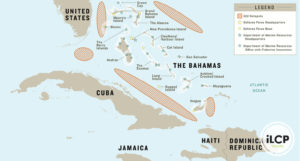 The Bahamas, U.S. and other Caribbean Nations. Credit: iLCP
The Bahamas, U.S. and other Caribbean Nations. Credit: iLCP
This huge area of responsibility and limited capacity to deter foreign vessels from fishing illegally presents challenges in enforcement, and currently, nearly 1/3 of all fishing catch in The Bahamas is considered IUU fishing.
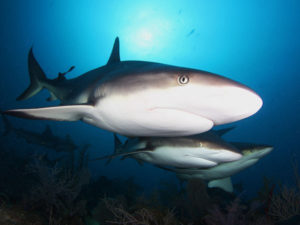 All commercial fishing of sharks is prohibited throughout The Bahama’s EEZ, along with the sale, importation, and export of shark products. Photo credit: Noel Lopez Fernandez
All commercial fishing of sharks is prohibited throughout The Bahama’s EEZ, along with the sale, importation, and export of shark products. Photo credit: Noel Lopez Fernandez
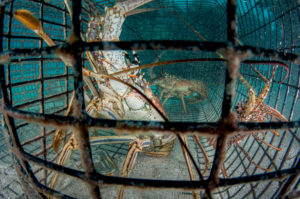 Critical fisheries like lobsters are a life support for The Bahamas and have come close to collapse because of illegal activities. Photo credit: © Shane Gross / iLCP
Critical fisheries like lobsters are a life support for The Bahamas and have come close to collapse because of illegal activities. Photo credit: © Shane Gross / iLCP
Spiny lobsters alone, a key fishery in The Bahamas, generate $90M annually and the Caribbean queen conch and Nassau grouper fisheries generate over $63M annually. Not only are livelihoods and local economies put at risk, but the impact to marine wildlife threatens the balance necessary for the survival of ecosystems, such as coral reefs.
Since 2019, WildAid Marine has been working with the MAP for Sustainable Fisheries, a multiagency initiative to enhance collaboration to improve marine patrols, surveillance, investigation, and public outreach. In October 2022, that long-term cooperation was solidified in a historic memorandum of understanding (MOU) signed between WildAid, The Bahamas’ Ministry of National Security, The Bahamas Department of Marine Resources, the Royal Bahamas Defence Force (RBDF), The Bahamas National Trust (BNT), TNC, and other stakeholders.
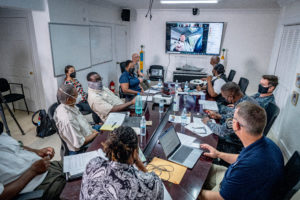 Initial meetings among agencies to improve communication and cooperation and better enforce fisheries laws in The Bahamas using the MAP Plan. Photo credit: © Shane Gross / iLCP
Initial meetings among agencies to improve communication and cooperation and better enforce fisheries laws in The Bahamas using the MAP Plan. Photo credit: © Shane Gross / iLCP
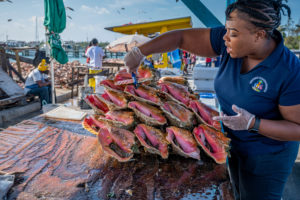 Ervanna Moss-Rolle from the Department of Marine Resources of The Bahamas measures queen conch lip thickness for fisheries compliance and data-collection purposes at the Montague Fish Market in Nassau. Photo credit: © Shane Gross / iLCP
Ervanna Moss-Rolle from the Department of Marine Resources of The Bahamas measures queen conch lip thickness for fisheries compliance and data-collection purposes at the Montague Fish Market in Nassau. Photo credit: © Shane Gross / iLCP
Our collaboration with the MAP, began with the development of a comprehensive Marine Protection System Plan (MPS) for The Bahamas’ EEZ to address gaps and opportunities for enhancing patrol, surveillance, and investigation techniques and processes.
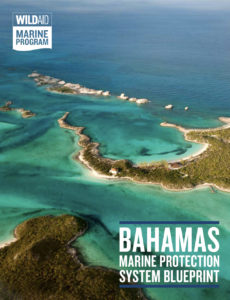 In the 2021 MPS Plan, WildAid Marine developed recommendations for training law enforcement officers, resource managers, lawyers including dedicated peer-to-peer exchanges and regional workshops.
In the 2021 MPS Plan, WildAid Marine developed recommendations for training law enforcement officers, resource managers, lawyers including dedicated peer-to-peer exchanges and regional workshops.
Since then, over 30 action items from the MPS plan were incorporated into the MAP’s strategic plan to increase effectiveness of Bahamian marine law enforcement. Our team has also increased collaboration among Bahamian and U.S. law enforcement agencies and conducted a tabletop exercise between the two countries to combat international IUU originating from the U.S. east coast. WildAid Marine also lead an advanced enforcement training in wildlife trafficking that was hosted by the RBDF. These joint initiatives have helped build confidence among fishing communities in law enforcement officials, to better protect their marine heritage.
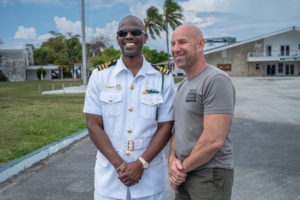 Royal Bahamas Defence Force (RBDF) Squadron Commanding Officer and Sea Training Officer, William Sturrup with WildAid’s Senior Enforcement Advisor, Mike Cenci. Photo credit: © Shane Gross / iLCP
Royal Bahamas Defence Force (RBDF) Squadron Commanding Officer and Sea Training Officer, William Sturrup with WildAid’s Senior Enforcement Advisor, Mike Cenci. Photo credit: © Shane Gross / iLCP
Mike Cenci, “All these illegal activities are a death by a thousand cuts. Strategic illegal-take combined with U.S. recreational charters or someone just coming over from the day, hammers the natural resources of the Bahamas. With the dedication of the MAP, we can continue to address and stop these critical threats.”
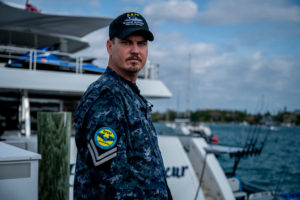 A Portrait of police officer Bronson Lowe with the Royal Bahamas Police Force in uniform. One aspect of his job is enforcing fisheries laws in The Bahamas and he regularly goes out on ocean patrols. Photo credit: © Shane Gross / iLCP
A Portrait of police officer Bronson Lowe with the Royal Bahamas Police Force in uniform. One aspect of his job is enforcing fisheries laws in The Bahamas and he regularly goes out on ocean patrols. Photo credit: © Shane Gross / iLCP
Already the MAP has made substantial progress in strengthening their Marine Protection System with the seizure of two international illegal fishing vessels last year, penalized with $1.9M in fines. Fishermen also report a revitalization of fish stocks in the northern and southern waters of The Bahamas due to increased patrols, and a joint effort between U.S. and Bahamian authorities resulted in the donation of a new patrol boat for Bahamian rangers.
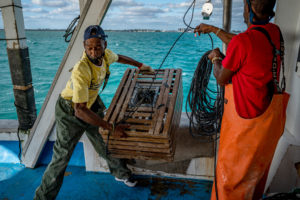 Legal commercial fisherman land an empty lobster trap onto their ship in The Bahamas. Poaching of lobster robs locals of their livelihoods. Photo credit: © Shane Gross / iLCP
Legal commercial fisherman land an empty lobster trap onto their ship in The Bahamas. Poaching of lobster robs locals of their livelihoods. Photo credit: © Shane Gross / iLCP
Gregg Casad, Senior Enforcement Advisor , “What is so exciting about our partnerships in The Bahamas, is that officers now have the tools they need to do their job better. In the field, on boats and on the water. This is where meaningful change happens, and we are excited to be part of this process in The Bahamas.”
WildAid is proud to partner with The Bahamas MAP for Sustainable Fisheries and thank the iLCP for increasing awareness of this initiative and supporting conservation through visual storytelling. Cover photo by Shane Gross. Read iLCP’s 2022 Impact Report here.